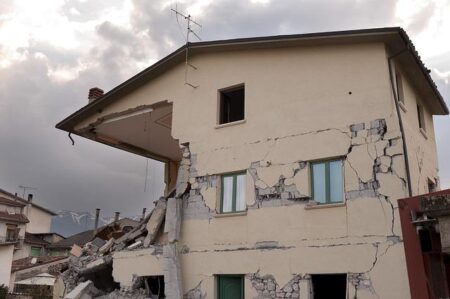Rome – Italy’s youth find themselves at the center of a heated debate following the government’s introduction of a sweeping new security decree aimed at curbing public demonstrations. The legislation, which imposes stricter regulations and harsher penalties for protesters, has sparked widespread concern among civil rights advocates and young activists who argue it threatens fundamental freedoms of assembly and expression. As demonstrations continue to swell across the country, the decree’s impact on Italy’s social and political landscape is becoming increasingly apparent.
Impact on Youth Activism and Civil Liberties in Italy
Italy’s new security decree has ignited widespread concerns among youth activists, who argue that the legislation effectively stifles their right to peaceful assembly and protest. Under the stricter measures, authorities have been granted expanded powers to impose bans on public demonstrations preemptively, particularly targeting gatherings led or attended by young people. Critics claim that these provisions disproportionately surveil and penalize youth, casting a shadow over a generation already grappling with economic uncertainty and political disenfranchisement. Several youth organizations have reported an uptick in police interventions and fines, fueling fears that the civic space for dissent is rapidly shrinking.
Civil liberties advocates have highlighted the decree’s potential for overreach, warning that the ambiguity in its enforcement criteria could lead to arbitrary crackdowns on legitimate activism. The table below summarizes key impacts observed since the decree’s implementation in early 2024:
| Impact Area | Reported Effect | Stakeholder Concern |
|---|---|---|
| Public Protests | 30% decrease in authorized youth demonstrations | Restriction of lawful expression |
| Police Powers | Expanded authority to disperse gatherings | Potential abuse of force |
| Surveillance | Increased monitoring through digital tools | Privacy violations |
Activists are calling for a review of these restrictions, emphasizing that protecting young voices is essential for a healthy democratic society. Without such safeguards, the decree risks turning Italy’s streets into arenas of suppression rather than platforms for change.
Analyzing the Government’s Approach to Public Order and Dissent
The recent decree marks a decisive shift in how Italy manages public demonstrations, particularly targeting the younger demographic known for organizing large-scale protests. Authorities have adopted a more stringent stance, prioritizing immediate containment over dialogue. This approach includes increased police presence, expanded powers to detain protesters, and heavier penalties for unauthorized gatherings. Critics argue this heavy-handedness risks escalating tensions rather than promoting social cohesion, while government officials maintain it is essential for maintaining public order and safeguarding citizens.
Key elements of the decree include:
- Enhanced surveillance: Greater use of technology to monitor protests in real-time.
- Expanded arrest powers: Lower thresholds for detaining individuals attending demonstrations.
- Restrictions on protest zones: Designation of specific areas where protests may be prohibited or severely limited.
- Penalties: Steeper fines and longer jail terms for violations of public order regulations.
Below is a summary of enforcement actions since the decree’s implementation:
| Month | Protests Monitored | Arrests | Fines Issued |
|---|---|---|---|
| January | 12 | 36 | 48 |
| February | 15 | 42 | 57 |
| March | 18 | 51 | 63 |
Strategies for Protecting Democratic Rights Amidst New Security Measures
Amidst heightened security protocols, activists and legal experts emphasize the importance of maintaining transparent communication channels between authorities and civil society groups. Establishing independent oversight committees can ensure that security measures do not infringe upon constitutional freedoms. Such bodies serve as impartial referees, reviewing the application of regulations and safeguarding citizens’ rights to assembly and expression. Empowering community leaders and legal advocates to participate in policy discussions encourages accountability and paves the way for reforms that balance security with democratic liberties.
Grassroots organizations are increasingly adopting creative approaches to preserve their voices in public discourse. Utilizing digital platforms to organize virtual protests and awareness campaigns helps circumvent restrictions on physical gatherings without compromising the message. The following table summarizes key tactics employed by youth groups to navigate new security landscapes:
| Strategy | Purpose | Impact |
|---|---|---|
| Virtual Demonstrations | Evade physical gathering limits | Broaden participant reach nationwide |
| Legal Aid Networks | Offer immediate support against arrests | Reduce intimidation, promote resilience |
| Media Literacy Programs | Combat misinformation | Strengthen public understanding |
| Community Dialogues | Build trust with law enforcement | Mitigate conflict during protests |
To Conclude
As Italy grapples with the implementation of this new security decree, its impact on the country’s youth and their right to protest remains a contentious issue. Advocates warn that the measures risk stifling democratic expression and exacerbating social tensions, while government officials defend them as necessary steps for public safety and order. The coming months will reveal how these policies reshape the landscape of civil activism in Italy and test the balance between security and freedom in a changing political climate.




